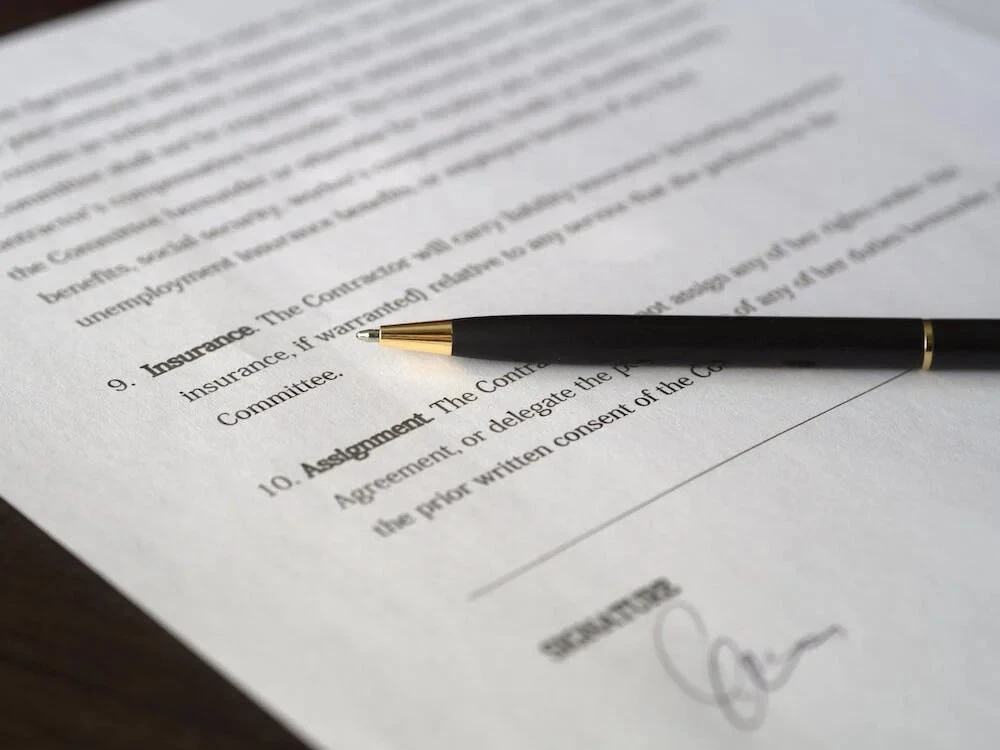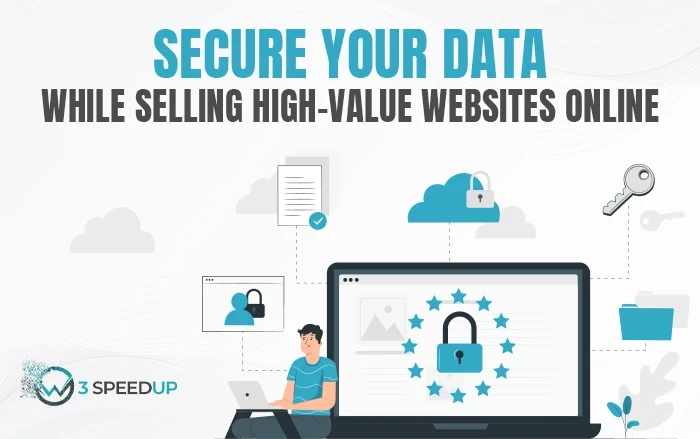There’s a huge chance you’ve heard a few stories about the fortunes to be made in real estate flipping, the practice of buying and renovating a property in need of some TLC, and reselling it for a profit. Given that you’re reading this highly niche article, you’ve probably heard that real estate flipping has taken to cyberspace, too.
When selling high-value websites online, securing your data is crucial. Equally important is utilizing professional llc services to ensure your business structure is solid and legally protected throughout the transaction.
Well, in a manner of speaking, at least. Tech-savvy individuals have taken websites, the real estate of the internet, and applied the same principles.
“Sounds simple,” you might be saying to yourself, but there’s a lot of research and skill that goes into the art of flipping high-value websites. If you’re willing to put the time into picking up a beneficial skill and don’t mind a bit of risk, we’ll cover all the bases to turn you into a flipping pro!

What Is Website Flipping?
From our genius analogy above, you’ve likely already picked it up. Website flipping is buying a site in need of improvement, polishing it up by applying a few techniques to increase revenue, and then selling it for a significant return.
There are two ways you can go about selling sites for a profit – building your own sites and buying sites to be improved. Of course, building sites requires way more time and skill, so we’ll be focusing on the latter for the purpose of this guide.
With a website that’s already been built, most of the work has already been done, so all that’s left for you is to swoop in and spend a few racks, baby!
We’re exaggerating. Obviously. If it was that easy, everyone would be doing it. At the very least, you need to understand the basics of content creation, web design, user experience (UX) optimization, search engine optimization (SEO), and data management. It’s also crucial that you are knowledgeable in online security methods to help you protect your data. If you have the cash to spare, you could just hire a team of professionals to handle those, but where’s the fun in that?
As with everything that requires a capital investment, there is absolute risk involved in this process, and it’s crucial that you actually know what you’re doing before getting involved. Even though you’re not investing in anything physical, this is still an investment and you should practice risk management accordingly – profit is never promised, so never spend money you aren’t willing to lose, and DO NOT allow emotions to determine how you spend.
In other words, if you’re the person who impulsively places larger and larger bets at the roulette table to recover your losses, and gets mad at the dealer when things don’t go your way, it might not be the best idea to get involved.
Finding Your First Investment
You’re still here. Great! I guess you’ve decided that this is right for you, so allow us to help you find your first site to flip.
As we’ve discussed, managing your finances well is vital to your success as a website flipper. Before going on the hunt for first site-flip contenders, you must determine a budget. It’s good to have a surplus of funds available for what you’ll invest into the site at a later stage. After all, you’re investing in a fixer-upper, and there’s little hope of any fix-upping happening if you can’t afford it.
It’s time to start searching for a “good-but-could-be-better” site to purchase. Look for sites in popular niches to ensure you’re getting a decent active audience out of the deal. You’ll be able to create better content and develop more interesting market strategies by choosing a niche you are personally interested in. According to Themeisle, the three most popular niches in 2024 are digital marketing, tech, AI, and blogging; if you’ve been paying any semblance of attention to what’s happening in the world around you, that should come as no surprise at all.
Now that you have a niche in mind, visit marketplaces such as Flippa, contact site brokers, or look for sites for sale directly by the owner. Getting in touch with website flipping communities is also an invaluable way to keep an ear to the ground.
The Importance of Data Protection When Site-Hunting
Cybersecurity threats continue to be a concern in every corner of the internet, so you should search for domains with top-tier security standards that prioritize securing your data to ensure users’ privacy and safety.

Most users have sensitive data stored in their browsers, and you want to avoid purchasing a site with data security weak points that could lead hackers to access your visitors’ sensitive information.
Besides preventing unauthorized access for the sake of users’ personal data, you’ve invested quite a lot of money into purchasing a site. An additional layer of security will give you peace of mind knowing that you don’t have to worry about data loss.
Even though extra security measures will cost you more, it’s worth the investment to ensure your site won’t be a security risk to users, and the content you’ve spent time on is safe from data breaches.
Don’t Skip the Research Part
You’ll find tons of sites for sale on marketplaces. Many of them will look attractive. As the old adage goes, not everything that glitters is gold. It’s of the utmost importance that you research every potential site and do your due diligence before making an offer. We do not use the word “utmost” lightly – your research during this stage is what will make or break the success of your investment.
To rewind to the real estate comparison (we know, yawn), there are home inspections involved before buying a property. You need to know exactly what you’re getting into before spending copious amounts of money on something, so it’s recommended to create a checklist measuring your prospective site’s metrics before purchasing it and discovering the metaphorical termites in the floorboards later.
Best Practices for Creating a Site Checklist
Congratulations, you’ve found a list of contenders for your first purchase. You need to do the thorough checks we mentioned a second ago to find a winner. The best way to do this is by asking the seller for data reports such as profit and loss (P&L), guest access to Google Search Console and Google Analytics, and by creating a due diligence checklist. Reviewing the site step-by-step using a checklist allows you to determine if the site is worth the price it’s been listed for, and helps you avoid running into unforeseen issues.
 1. Domain & Site Name
1. Domain & Site Name
A good way to start your checklist is with the first thing you see on any site: the name. A site with a simple, catchy domain name is easier for visitors to recall when typing it into their browser’s address bar. You can always change the site’s name, but you’ll risk losing the already-established audience.
Brandable domain names are best if you plan to create unique content and want your site to stand out from the crowd. Investing in a brandable domain also allows you to expand into sub-niches to diversify your content creation and attract more traffic.
You’ll need to check the domain’s history to be sure there aren’t any copyright or trademark infringement issues. The last thing you want is to step into the scorching legal waters having barely started building your website flipping empire.
 2. Data Security
2. Data Security
We live in an age where your information is mined for monetary gain every single second.
Thanks, Zuck.
Your responsibility is to ensure you keep your data secure. The importance of data security when searching for a website cannot be understated, and it’s preferable to find a site already using the latest security protocols so you don’t have to spend more to protect and secure your data later.
The first layer of data protection you should check a site for is a Secure Sockets Layer (SSL) certificate. SSL is present when a site’s URL starts with “https://”, and this layer of security encrypts and protects data exchanged by users. Clicking the padlock icon to the left of the address bar will also provide a site’s security certificate information. All in all, SSL is the most reliable way to keep your site and user data, including financial information and personally identifiable information, safe from cyber threats threatening to cause security incidents.
Access control measures need to be robustly implemented. Sites collecting data from users need to adhere to legislation such as the General Data Protection Regulation (GDPR), which sets limitations on storing and managing data for sites operating in the European Union. It’s honestly great to see these regulatory measures being put in place to prevent the Big Tech powers from access to certain user data… at least, let’s just pretend that’s how the world works.
 3. Direction of Traffic Trend
3. Direction of Traffic Trend
The traffic trend for your chosen site will show you the difference between a has-been blog and one on the brink of an explosion in popularity. Aiming for a site with either stable or upward-trending audience numbers gives you a solid foundation to build upon. Declining traffic will likely come with a lower valuation, so there’s an opportunity for a bigger return if you know your stuff. Be patient, we’ll dive deeper into that stuff soon
 4. Operating Costs & Revenue
4. Operating Costs & Revenue
It’s crucial to ensure your target site is bringing in enough gross profit to maintain its monthly operating costs, or you’ll run the risk of burning through your budget way faster than expected. You’ll be spending potentially large sums to improve the site once you’ve purchased it, so you should avoid having to spend more to recoup operating losses.
Measuring the site’s revenue also involves understanding its monetization sources. Get in touch with the seller to confirm that all possible monetization opportunities already established, such as affiliate partnerships and display ad networks, will be transferred to you as the new owner
 5. Content Quality
5. Content Quality
It’s quite easy to read through a few random articles on the site you want to buy. Reputable sites will have natural, legible content, and well-produced visuals. The site should look appealing on both PC and mobile devices. Grammar errors and typos are a clear sign of low-quality content, but you’ll also want to be on the lookout for robotic-sounding, AI-generated content.
If you immediately see a million shady pop-ups on the site you’re looking at, your critical information will not be safe on this site. Avoid investing in a site with untrustworthy ads present to prevent data breaches on the sides of both your site and users.
To put it simply, if it looks and sounds poor, just get out of there.
 6. Backlink Profile
6. Backlink Profile
The next step is to check for bad backlinks. They go by a few names – toxic, spammy, farm-y… the list goes on. Regardless of what you call them, they are bad. If you have any SEO knowledge, you’ll be aware that these links will be devalued by Google, potentially negatively affecting a site’s search rankings. You do not want to own a site that’s viewed as untrustworthy by the world’s most popular search engine.
Bad backlinks can also lead to harmful sites trying to access your sensitive data, run by hackers aiming to steal your credit card information or gain control of your device. Protect sensitive information for your visitors by looking for sites with safe and secure links to reputable pages.
Now that you’ve gotten rid of the bad apples and purchased your first high-quality site, you can move on to the improvement process. Your empire’s just getting started.
Fixing Up Your Fixer-Upper
Every site is different, but there are generally clear ways to improve your site’s performance. Your focus should mainly be attracting more traffic, and implementing ways to capitalize on that traffic by creating a safe, enjoyable user experience.
 Creating Appealing Content to Attract More Traffic
Creating Appealing Content to Attract More Traffic
The TikTok era has birthed online creatures with the attention spans of newborn goldfish. As the first page your visitors will come across, you must ensure your homepage is visually appealing and clutter-free. Use it to tease the rest of your content. Display just enough to leave a lasting impression and leave your new visitors curious about what your site has to offer.
A great way to increase your organic traffic is by posting your content on social media platforms like Instagram and TikTok. Take your time when creating a content rollout strategy to get the best results. You can also apply to become an Amazon Associate to leverage the audience boost gained from your social media promotion can create a multiplier effect on your revenue.
If your budget allows, investing in a white-hat SEO service to improve your search rankings with high-quality backlinks might be a good idea.
 Improving Data Protection to Protect Important Information
Improving Data Protection to Protect Important Information
Taking the time to improve your site’s data security measures and secure data backups can ensure the success of your site. You want to safeguard sensitive information such as addresses and credit card information for your users while keeping your site’s critical data safe. Bad actors will always be looking for weaknesses to exploit, so it’s best to be prepared for data breach attempts.
Check to ensure your site’s SSL certificate is always up-to-date to protect your audience’s mobile devices and data. Make a habit of backing up your data, leveraging advanced online security services and following the best practices for secure data backups
You’ve taken your site to the next level and polished all the bells and whistles. Now it’s time to create a valuation, list your site for sale on a website marketplace, and attract some buyers!
Transferring Your Site to the New Owner
It might be hard to sell your first baby, but this is the moment all your hard work has led up to. You’ve received a few offers, and you’re preparing the data to convince your buyer that this is the site for them…

Arrange the necessary data reports on stats and financials to prove your site’s profit and growth potential. All P&L and traffic data needs to be as organized as possible to ensure there is no misleading or incorrect information. Package up all accounts, like the email inbox and Instagram profile linked to the site for an easy handover. Though you are handing over all this information, it’s good to keep a copy of your data to analyze and compare with your later ventures.
You should create a detailed standard operating procedure (SOP) to provide the buyer the most seamless transfer. The SOP is a guide documenting your day-to-day processes to help the buyer understand how you’ve been running the site. The new owner will inherit the knowledge of how you manage your content and conduct data protection within your site. You wouldn’t want the new owner being completely lost when taking over your site now, would you?
As you wait for the confirmed buyer to perform their due diligence on your site, keep running the site as if you’re still its loving owner. Any sign of negligence could leave a bad taste in the buyer’s mouth and cause them to pull out of the deal. Have the necessary maintenance done as usual and keep your site looking shiny until the deal has been completed. It’s the least you could do, right?
What’s the Next Step?
Your buyer has seen your site’s reports, done their due diligence, and notified you that they’re happy to take it off your hands. Your site-flipping portfolio is being built on a great foundation, and your bank account’s looking quite healthy.
Congratulations, you’re now a certified website flipper!
If you’ve decided that this is an enjoyable hustle for you, it’s time to get back into the market and hone your skills by purchasing a few more sites to flip. After all, we’re sure the sweet dough you’ve just made will help with that.
Just remember to practice patience, manage your finances well, and put as much time as you can into studying the art of selling high-value websites. Continue building your site-flipping empire, and you’re sure to experience nothing but success.
 Read More: Breaking Down the Differences: PaaS vs SaaS for App Development
Read More: Breaking Down the Differences: PaaS vs SaaS for App Development
 Read More: Choose the Best Thesis Writing Service
Read More: Choose the Best Thesis Writing Service
 Christmas Mega Sale – Enjoy Up to 50% OFF on Every Plan!
Christmas Mega Sale – Enjoy Up to 50% OFF on Every Plan! 


